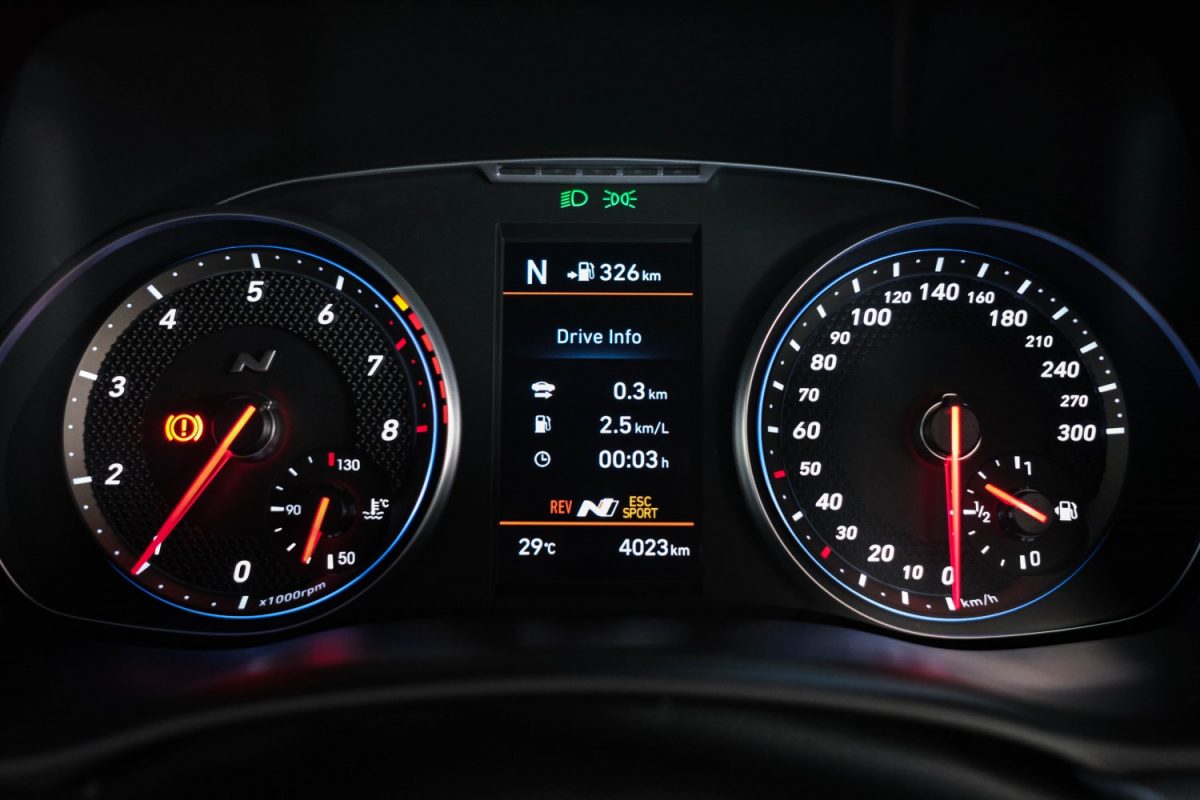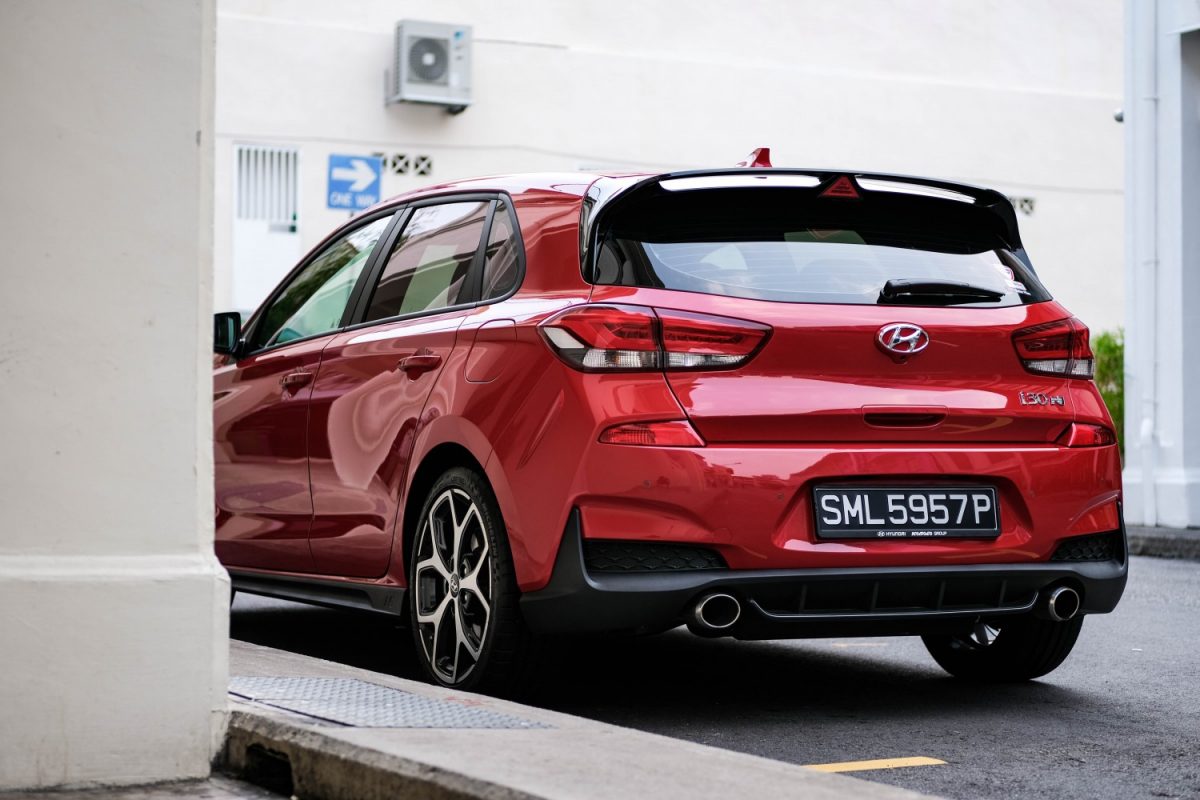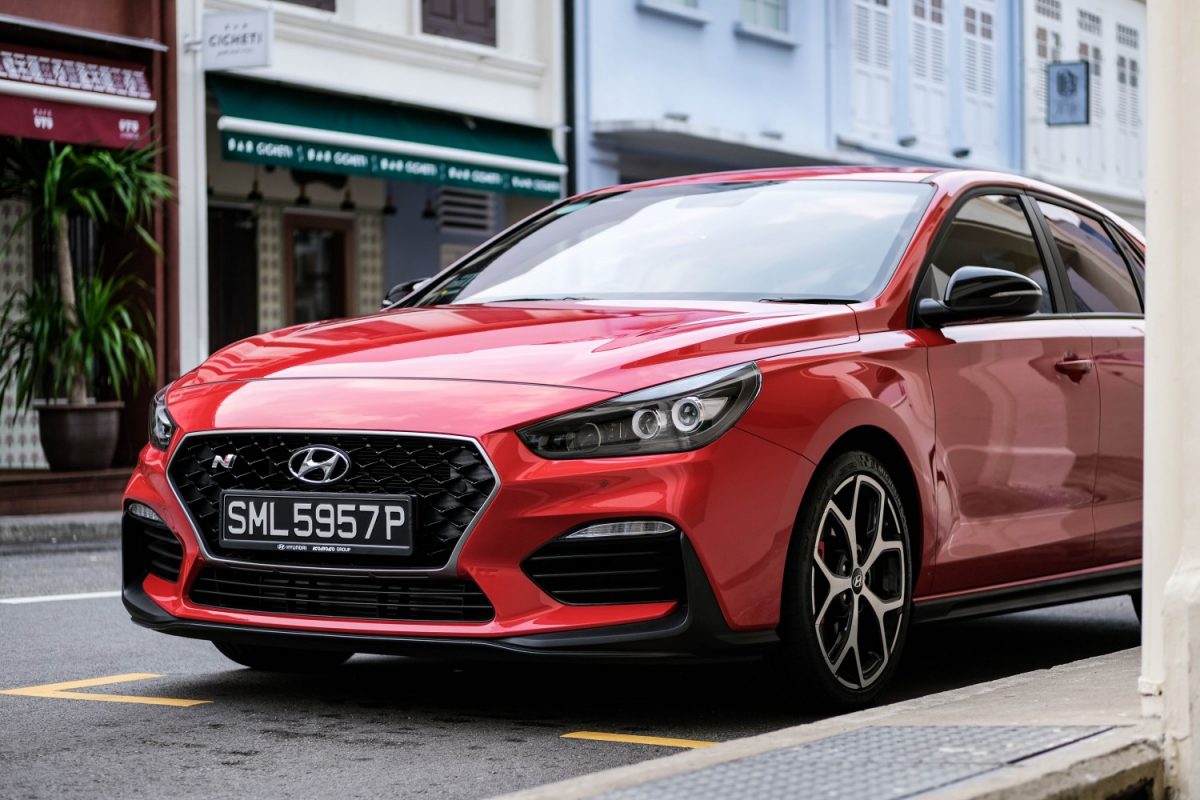- Shares
- 50
As the last of the amber lights on the tachometer switched off, my right hand slid down the leather steering wheel a little. I pressed the right-sided blue button once, and the N logo appeared in the centre of the instrument cluster. The car was now ready.

There are days when I ask myself if this patience is really necessary. This is the only car I’ve driven which needs a prolonged warm-up from a cold start; I’d become used to modern automobiles being capable of delivering their full capabilities right after ignition.
When I was in the market for a car, nothing within my budget appealed to me – they were all just a bland set of wheels with a tinsel of over-marketed luxury or modernity. I explored the manual options as well, but the ZC32S Suzuki Swift Sport was too impractical due to its tiny boot capacity, while the ZC33S was only available with two airbags – a compromise in safety I would not contemplate. The Honda Civic Type R, Subaru WRX and Ford Focus RS were all out of reach; it seemed by passion for the stick shift would be the nail that sticks out and gets hammered down.
Then I drove a friend’s new Hyundai i30 N for an afternoon and got hooked. A month after, the local dealership offered me a price that was too difficult to refuse, so here I am.
Despite being a high-performance car, the i30 N has taught me patience. The early days of ownership were the toughest. With a burbling exhaust that crescendos as the accelerator is pressed deeper, resisting the temptation to push the car beyond 3,000 rpm during the running-in phase demanded a lot of restraint. And as I wrote before, the car needs a while to warm up from a cold start; I take less time to get out of bed and hit the pavement for a morning run (just joking – I don’t run).

Taking it easy gave me time to focus on other things, like learning to manually match the engine revs more smoothly when downshifting. It takes a while to adjust to the i30 N’s really wide turning radius of 5,800 mm (for context, the Audi R8 V10 supercar – read my review here – has a turning radius of 5,600 mm); the margin for error when executing U-turns on narrower roads is quite slim.
But patience is usually rewarded. On my way home from the first servicing, I made the engine literally sing for its supper (of petrol). I pressed the accelerator into the floor of the car with conviction; the engine came alive and the needle made its clockwise journey across the tachometer with some urgency as the shift timing indicators started lighting up from left to right on the centre of the instrument cluster. The i30 N’s exhaust rewarded my obedience of the shift timing indicators with pops and snaps like a flatulent teenager as I lifted off the throttle to change gears; it’s equal parts uncouth and hilarious, and that sense of puerile satisfaction can be quite the guilty pleasure. There’s some electronic trickery involved in this childish theatre, but it never feels overdone.
For the number crunchers, the 2.0-litre turbocharged engine puts out 247 hp and 353 Nm of torque. In the hands of a skilled driver, the i30 N will complete the century sprint in 6.4 seconds, keeping pace with the highly acclaimed Volkswagen Golf Mk 7 GTI (DSG), a hot hatch that’s evenly matched with the Hyundai on paper in engine displacement, horsepower and torque, but costs about S$30,000 more.
Otherwise, the i30 N is as approachable as a family hatchback when driven sensibly. Its 1.4-tonne mass will keep up with traffic without any drama, but there are always little visual reminders that there’s a different personality lurking just beneath the surface, waiting to be invited out.
The i30 N’s interior is largely similar to its mainstream sibling, the i30 hatchback, save for a few noteworthy differences: the centre-mounted infotainment display supports Apple CarPlay, Android Auto, and wireless Bluetooth connectivity; there is a Qi wireless charger just below the climate control buttons; a shift timing indicator at the top centre of the instrument cluster; a manual gear shift; sports seats in suede and leather with a stamped N logo on the backrest; and of course, the N steering wheel.

The N steering wheel has two buttons in baby blue (Hyundai calls it “Performance Blue”, but you can decide for yourself) that provide access to a total of five different driving modes. Comfort, Sport, and Eco are accessed with the left button labelled “Drive Mode”, while the N and custom N modes are accessed with the right button that bears the symbol of a chequered flag. The custom N mode allows adjustments to the engine, suspension, steering, transmission rev-matching, and stability control.
My three most frequently used drive modes are probably the N, Eco, and custom N. Why buy a high-performance car if you’re not going to drive it the way it was engineered for? The Eco mode is for cajoling the engine out of a long slumber, giving it a bit of time – usually no more than five minutes – to get up to the necessary temperature; I also use it for highway cruising to do my tiny part to slow global warming. For the custom N, I have everything at maximum aggression but with the suspension set to Comfort, for when I have passengers who prefer a softer ride.
The i30 N stays reasonably flat in No mode when rounding corners at pace, but the firm damping also has enough pliancy to make most of Singapore’s bumpy road surfaces tolerable – it’s a good balance between ability and usability. The automated rev-matching feature flatters to deceive on the downshifts, as the electronics help to blip the throttle to smoothen the transition to a lower gear, making me look like a driving god. Those pseudo bucket seats provide adequate lateral support but they don’t know the first thing about tactfulness when I skip the gym for too long at a stretch. The standard Michelin Pilot Super Sports on the i30 N’s 18-inch wheels tend to slip a little when cold – another one of those things about the car that have been training my patience.

The three-spoke, multi-function leather N steering wheel is nice to hold and seems a little smaller than some of the German cars’ I test-drove recently. It feels more ergonomically suited to the i30 N’s intent. The steering weight is closer to a MINI than a Golf, so changing directions in the i30 N requires more commitment. The effort is rewarded in equal measure, however, as the nose responds accurately when pushed within the (overbearing) sensibilities of Singapore’s speed limits. Where the i30 N pales in comparison to the MINI is steering feedback but to be fair, a MINI isn’t for everyone either.

The gear stick is nicely weighted and moves through the gate with a satisfying mechanical tactility. It has a reasonably short throw, although I briefly considered swapping the stock option out for a FMSS3 short shifter by Forge Motorsport. The absence of an authorised distributor willing to perform the installation quickly put an end to that impulse, though. I don’t particularly like the clear plastic on the top of the gear knob as I find it sticks a little to my palm, so I’ve been shifting gears by holding the leather handles around the gear knob. If you know of attractive aftermarket options for the i30 N, please leave a comment below!
The clutch pedal is light and with a consistently high biting point, it’s easy to jump in the i30 N and pull off smooth gear changes fairly quickly. It’s obviously no match for modern automatic transmissions in terms of smoothness, or dual-clutch gearboxes for virtually loss-free torque delivery, but to see those as shortcomings is to miss the whole point of having a car with a manual transmission. The brake pedal has a firm feel and when pressed hard, sheds speed very reassuringly.
This is a car that needs to be worked hard for the rewards to be reaped, but while the i30 N has great performance potential, it’s also a very comfortable daily driver that won’t upset passengers (unless they’re simply too polite to give me the honest truth). There are some hard plastics in the cabin that show scuff marks a little too easily for my liking, but there are also comfortable soft-touch surfaces that make the cabin a pleasant-enough place to be in (something’s got to give for that 30-grand price difference against the Golf GTI I mentioned earlier). Luggage capacity, however, is on par with the GTI, so the i30 N will swallow up a couple of large luggage bags easily for a long weekend north of the Causeway.
Speaking of which, the i30 N sits on the thirstier end of the spectrum for a 2.0-litre turbocharged performance hatchback. I average about 7-8 km/l for my weekday commutes from Tiong Bahru to Bras Basah (90% city and 10% highway). That fuel economy can improve by two-fold if I drive from Tiong Bahru to Changi Airport (20% city and 80% highway). Efficiency suffers particularly when the car is idling, as the number can start to drop quite rapidly, almost as quickly as the fare metre jumps in taxis. On RON95 petrol, I get about 350-400 km from the 50-litre fuel tank. Obviously, your mileage will vary depending on your traffic conditions and how heavy-footed you are.
Everything is well-assembled though, and the i30 N is a testament to how far the Korean manufacturers – including sister brand Kia – have come in the last decade to compete not just against their Japanese rivals but at times, punch above their weight to make the European brands shift a little nervously in their German boardrooms.
After all, the i30 N is manufactured at Hyundai’s plant in the Czech Republic, which was opened in 2008 and has an annual production capacity of 350,000 cars. The Hyundai i30 sold in Singapore is made in this plant too.

Despite having the same shape and form, it doesn’t take long to recognise which is the more athletic sibling between the two. I feel the overall design has the right mix of Asian and European automotive styles. And unlike the polarising appearance of the FK8 Honda Civic Type R, the Hyundai i30 N should age reasonably well as it’s discreet enough to not draw too much attention to itself, yet distinctive enough to separate the men from the boys, so to speak.

In front, the black bezel accentuates the headlamps’ outline as the N badge adorns the hatchback’s grille. Behind, the distinctive triangular brake light on the black roof spoiler adds an element of contrast. The dual exhaust frames a rather busy-looking rear. Another N badge is glued onto the boot lid in case the other features aren’t obvious enough.
Other identifying visuals include the glossy black side mirrors and 18-inch wheels – the car also sits 4 mm lower than the standard hatchback. Inlets on both sides of the front bumper channel air towards the brakes and supposedly improve the car’s aerodynamics.
Unlike the other colour options, my i30 N in “Engine Red” does away with the red accent lines on the underside of the front and rear lips. I think it’s a wise show of restraint and the sign of an experienced hand in Hyundai’s design studio.

Symbolising a chicane, Hyundai’s high-performance N badge also represents Namyang (in South Korea) where the car was born, and the Nürgburgring in Germany, where it was honed. Branding aside, the i30 N’s development was steered by one Albert Biermann, the former head of BMW M who joined Hyundai to lead the company’s R&D team.
In an interview with Road and Track, he had this to say about the N sub-brand:
“N is a sub-brand of Hyundai, and the definition of a high-performance car is different from [a] sports car’s. A sports car is just that by nature, but a high-performance car is derived from a mass-production car. And the magic of it is that you can make it perform like a sports car, while still looking a bit like a normal car. Little bit of wolf in the (sic) sheep’s clothing. If you have a little bit of freedom, and the budget, you can do the stand-alone exercise. There are limitations, but there are good sports cars out there. Also, many not-so-good ones, and when it comes to being fun to drive, we can better the sports cars. But we still have the utility, which is also important, because our customers don’t have an i30 N as their third or fourth car. Many of the young people are happy if they can afford an i30 N or a Veloster N, and that’s their only car. And that’s our job to do. To not go crazy and make the car too expensive. I mean, on the N cars, you don’t find the fancy Brembo brakes, or the Recaro seats. For a reason. To keep the cost down, the price on the market. For the kids who want to have fun. Of course, it’s easier to just put Brembos on a car, but we took our own brakes from a bigger car, and got it going … and that’s the job.”
For a first outing, Hyundai’s i30 N has succeeded in ticking the boxes of performance, everyday usability, and (relative) affordability. There’s a more expensive Performance Pack model that comes with an extra 25 hp, 19-inch wheels, wider tyres, larger brakes, and an electronically-controlled limited slip differential, but if you don’t plan to take your car up north to the track, the ‘regular’ i30 N might just be the one car to do it all for the Singapore driver – provided you have a manual driver’s licence.
After all that’s said and done, the i30 N will probably remain a fairly niche car in Singapore given it’s only available with a manual transmission – not that I’d mind at all.
Special thanks to my wife for not giving me grief about buying a car she can’t drive.
The full version of this review can be read on Eat.Fly.Drive.
GEEK REVIEW SCORE
Summary
When someone tells you the former head of BMW’s M division was involved in developing this Hyundai, you pay attention.
Overall
8.5/10-
Handling - 9/10
9/10
-
Performance - 8/10
8/10
-
Design - 8/10
8/10
-
Comfort - 8/10
8/10
-
Practicality - 9/10
9/10
-
Value - 9/10
9/10
User Review
( votes)Alex eats a lot, travels a little, and drives cars that aren’t his on eat.fly.drive.

















